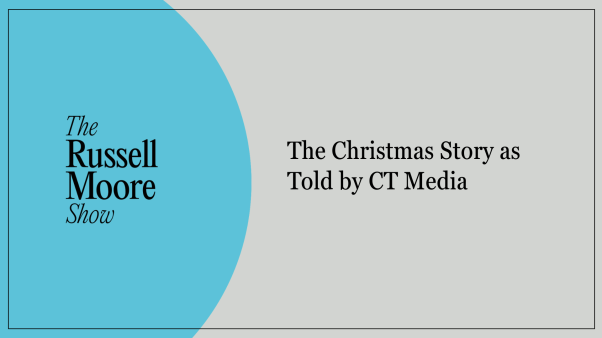Worship for many churches has been radically disrupted by the advent of COVID-19. Whereas some already make regular use of media such as IMAG (Image Magnification), livestreaming, and texting during a sermon, others are burdened by this change to more technology-dependent worship. For these latter churches, technological adaptations to accommodate necessary social distancing feel like a denial of their liturgical identity.
The church’s relationship with new technologies in worship has long been marked by equal parts undiluted enthusiasm and visceral antipathy. Even the long-outmoded overhead projector I proudly ran for our church as a teenager felt threatening to many at the time. Yet it also may be helpful to see what could be done by God’s grace through a host of technology options to deepen our worship, even if we make use of them only until the coronavirus has run its course.
While the following list of tips is not exhaustive, I hope it offers practical help to pastors and worship leaders who wish to provide liturgical and pastoral care to their congregations during these strange and demanding times.
1. It’s a transposition, not a transference.
The first time I taught an online course at Fuller Theological Seminary, I felt like an idiot. Having never taken a single online course in my 15 years of post-secondary education, I had no clue what to do, and I resented the work. I also made a rookie error: I taught my online class exactly the way I taught my residential classes.
As I've learned from the experts in the field of online education, teaching online isn’t about a direct transference of material from one medium, or modality, to another. It's about a transposition of the material. If I typically lecture for 40 minutes straight in the classroom, for example, I shouldn’t record a 40-minute video lecture and expect my students to experience the content in the same way.
It’s the difference between embodied cognition and disembodied cognition, between a dialogue and a monologue, and between getting a feel for the room and sending a unidirectional message out into the internet. To put it in musical terms, how might we transpose what we normally do in corporate worship into the new “key” of technology?
For instance, if you’re accustomed to hearing your congregation shout “Amen” or “Yes, Lord” to something you’ve said, consider inviting your people to send texts or to use a chat function in real time to feel like they’re still with you. If you normally lead the congregation in prayer, invite your people to send their prayer requests in advance so you can include their up-to-date concerns and perhaps pray for people by name. You might also consider recording your sermon in advance and asking your congregation to listen to it before the Sunday service so you can spend time in a livestreaming session responding to questions they may have about it. This could make it a more dynamic experience.
2. Make it personal.
A face-to-face encounter is what the faithful are promised in glory (1 Cor. 13:12) and what Paul wished he could have experienced with the saints at Corinth (2 Cor. 10:1). This is the ideal for worship. But since we’re faced with less-than-ideal circumstances, how might we encourage personal worship when much of it is mediated through a screen?
If you livestream your service, give people an opportunity to interact with each other for one or two minutes—with family or friends watching the stream together in person, over a chat function online, or by text message—perhaps with a series of questions related to your sermon. You might also arrange for certain people in your community to pre-record a testimony of God's faithfulness in the middle of these trying times and to share it during the service. Or you could facilitate this exchange by creating hashtags for people to use when they share a story on Instagram, Facebook, or Twitter.
Laura de Jong, pastor at Second Christian Reformed Church in Grand Haven, Michigan, offers this idea:
What we'd love to do is have members record themselves reading parts of the liturgy that we send them ahead of time and we'll link to those videos within the liturgy. We realize not everyone will be techy enough to follow the links, but hopefully most people will be able to access it. This way our congregation is still able to lead each other in worship, and we see some of the faces we've been missing.
3. Let your ministry be ambulatory.
The gift of reading church history is the gift of perspective. Liturgical scholar Aidan Kavanagh, in On Liturgical Theology,writes that before the era of the printing press, worship was chiefly heard and not read, active and not static, and far more dynamic—maybe even messier—than we may be used to in the modern era. Prior to the sixth century, for example, Christians “met liturgically in tenements (tituli), forums, piazzi, welfare centers (diaconiae), streets, shrines, cemeteries, and cathedrals. Their worship spilled over into entire cities and their suburbs to become a movable feast which took most of the day.”
Consider how these strange times might become an opportunity to do worship on the go. You could take a one- or two-minute video each day on your iPhone—whether at your desk, in your backyard, or on the street—and send it out to your people. This could include a thought for the day from Scripture, a word of encouragement, or a brief story.
Charles Spurgeon, while pastoring his congregation amid a major cholera outbreak in 1854 London, remarked, “All day, and sometimes all night long, I went about from house to house … and, oh, how glad they were to see my face!” If it’s possible and safe, consider making household visitations, greeting people in their front yards, or blessing them through the windows.
On March 15, Christ Church Anglican in Austin held a worship service in public parks all across the city. This allowed for both appropriate social distancing and small numbers to gather in praise and prayer. It also allowed for public worship to be truly public as it once was common in the early centuries of the medieval church.
4. Keep it lighthearted.
Or in other words, it's okay to get it wrong the first few times you try out a new form of technology. Increasingly anxious people may be blessed by moments of levity and laughter.
Ron Rienstra, professor of preaching and worship arts at Western Seminary, encourages us to let this moment become an opportunity for creativity and experimentation. Try new things without aiming at perfection. If you mess up on camera, don't try to hide it. If it gets awkward at a certain point, that's okay. Share moments of joy through funny videos or create your own lighthearted memes to share through social media.
5. Let's get physical.
If our aim is to foster the full, conscious, and active participation of the laity in worship, then we should look for ways to get people actively, rather than passively, involved. How do we counter the spectator mode that sitting in front of a screen may engender in us? Get the body moving!
We bring to worship healthy and whole bodies, or we bring broken and dispirited bodies. We worship God with bodies that have been scarred by touch and with bodies that have been starved of touch. What we do with our bodies matters. So if you sing during a livestreamed service, invite people to stand in their homes and sing along. If you pray, invite people to hold hands or to lay hands on one another at home. If your church kneels during confession in a typical service, encourage people to do the same at home.
If people are feeling stir crazy at home, invite them to go on prayer walks in their neighborhoods and to attend to the beauty of God’s creation. If that doesn’t feel safe, invite them to look out their windows at the small details of nature as a testament to God’s sovereign care.
6. Be present to the present.
One of our fundamental human needs is presence, physical or otherwise. As Lester Ruth, professor of liturgical studies at Duke Divinity School, remarks, “There is but one liturgical reality: Christ is present. It can and does take many modes. In light of that, I would double down on pastoral visitation even if it was by old-fashioned telephone calling or writing letters. Some contact is better than no contact.”
Consider using FaceTime to connect with the homebound or the Marco Polo app to send and receive video messages in real time. Get people to post pictures or to make short videos of their home life and to share them through on your church's social media channels to remain present to each other. Invite the artists in your community to make art that responds to our moment and to share it with the community as a way to provide a sense of meaning and comfort when so much of what we see in the news is evidence of fear, scarcity, and selfishness. This could include songs, poems, paintings, videos, or stories. And if it’s possible, pay them for their work.
7. Remember the little ones.
If you're livestreaming your service, there’s a good chance that many families are sitting at home surrounded by the sounds of interrupting children, whose bodies are wiggly and whose attention spans are short and fractured. Think of ways, then, that you might preach to these actual people in their actual circumstances.
You could record your sermon and send it out early so people can hear it during the course of their week. Then during your normal worship time on Sunday, do something different, such as preaching a sermon geared to children full of props, stories, and concrete examples. Consider ways to enlist the creative folks in your community to generate material throughout the week for parents who, with the canceling of school, may find themselves becoming desperate for help managing the crazy on the home front. Invite children to take pictures of things in their homes that remind them of God’s love and to have their parents share them on the church’s social media channels.
For our church in Austin, I recorded a video in which I pretended to be Mr. Rogers. I told the story of Jesus' encounter with the woman at the well from John 4 and used puppets to act it out. With no rehearsals and only two takes—the first was hilariously full of flubs—it was a fun way to bring both joy and a lesson about the way Jesus can satisfy the thirsts of their hearts.
8. Remember “the least of these.”
I've discovered recently that my prejudices against media technology reflect an embarrassing ignorance about how such technologies might serve the deaf, the elderly, the homebound, the sick and their caregivers, persecuted believers, those without transportation, the severely disabled, and those with a variety of learning styles.
Consider, then, not how this season of experimentation will make people woefully dependent on disembodied technologies, but rather how it may bring to your attention the people in your community who will be blessed long-term by adjustments that you make to serve everyone in worship.
As cranky and suspicious as I usually get about excessive uses of technology fighting against deeply embodied worship, I have found myself getting excited about the ways in which technology might deepen our praise of God and bind us together as the body of Christ during these strange times.
Jesus offers us a chance to more intentionally connect to members of the global church, and to attend to their joys and sorrows too. He offers us an opportunity to understand what it means to be a church in exile, where our experiences of weakness become an occasion for the grace of God to shine brightly. And he offers us an occasion to feel empathy with minority communities whose powerlessness forces them to acknowledge more readily the power of God.
Like the Sabbath, it’s important to remember that technology is made for humans, not humans for technology. There’s no one-size-fits-all approach. It’s okay to get it wrong and to try again. And we get to learn from and depend on each other in a way that our often-comfortable life may preclude otherwise.
W. David O. Taylor teaches theology at Fuller Theological Seminary and is the author of Open and Unafraid: The Psalms as a Guide to Life (Thomas Nelson) along with an accompanying set of illustrated psalms prayer cards.









